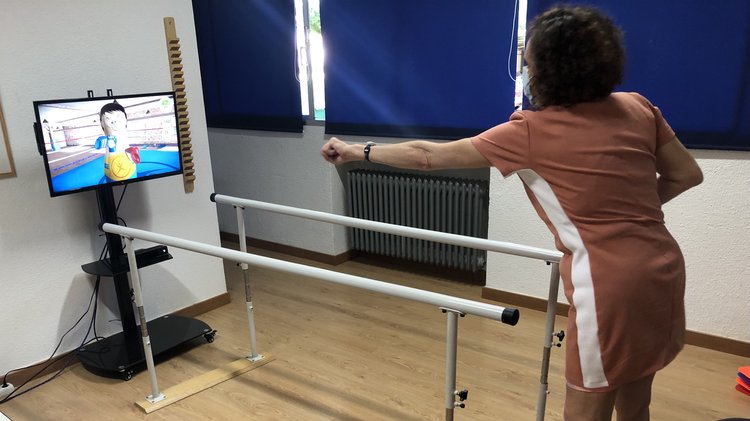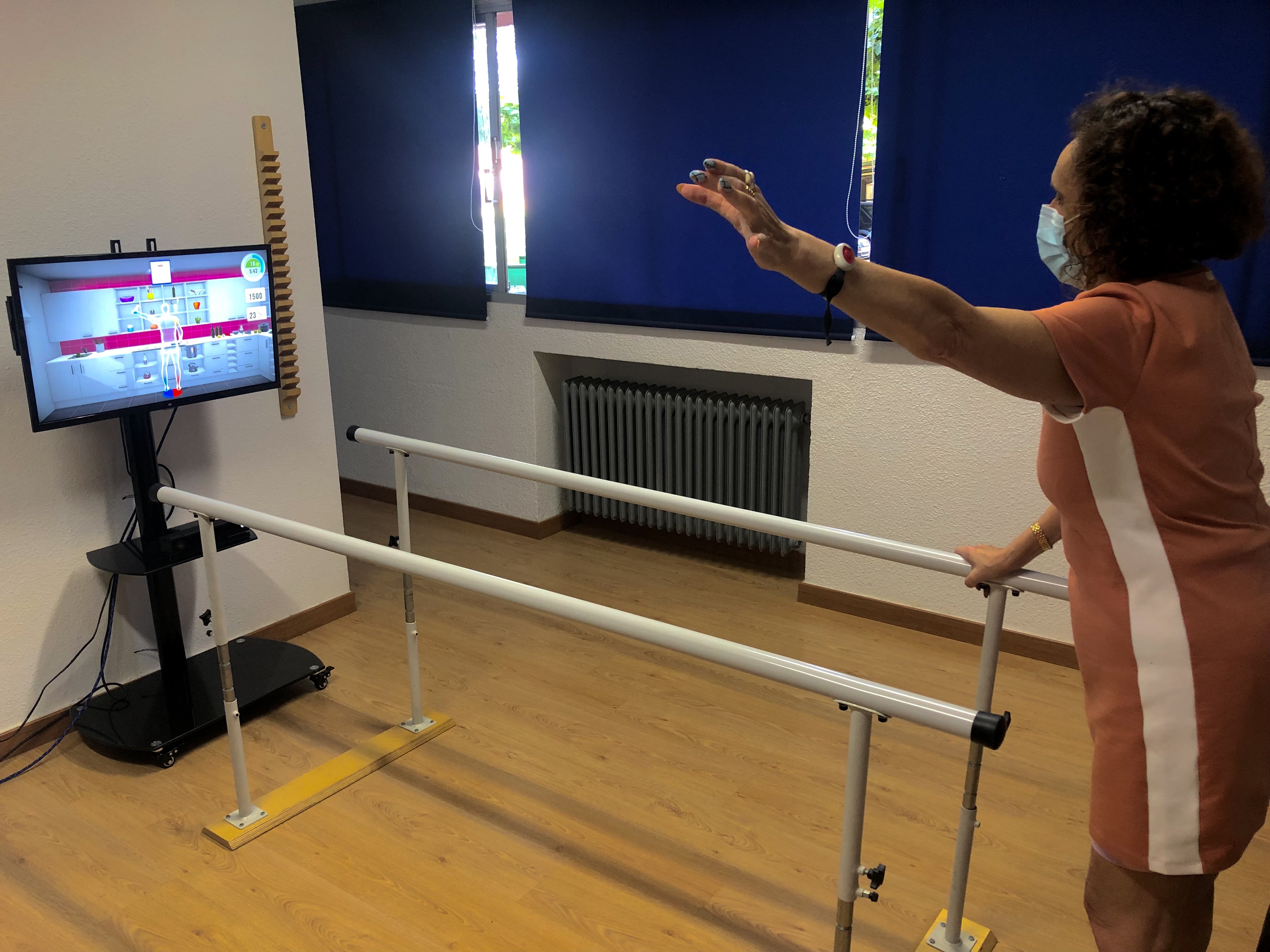
EvolvRehab has a long history of being used to treat persons living with Multiple Sclerosis and the therapists who treat them. The following is an interview with Miriam Sánchez de los Reyes, an Occupational Therapist who works at Multiple Sclerosis Association of Talaverana in the province of Toledo in Spain where she discusses her personal experience of using EvolvRehab with persons with MS.

Miriam, can you tell us about your experience as a therapist working with people with Multiple Sclerosis?
I have been working with people with Multiple Sclerosis since 2008. I am passionate about my work, although sometimes it is very hard, but it’s always satisfying to be able to help so many people improve their quality of life. As an Occupational Therapist, it is essential to provide the patient with strategies and tools that improve their day-to-day life and help them to be more independent in their activities of daily living.
How is technology part of the rehabilitation services that you offer to your associates there at ATAEM?
A few years ago, we began incorporating rehabilitation systems using new technologies, with the idea of providing an attractive method for rehabilitation to the patients, to increase their interest and motivation and to be a part of the exercise program of the Occupational Therapy sessions.
How do your patients react to the incorporation of EvolvRehab into their therapy routines?
From the very start, the interest in using EvolvRehab has been enormous, both in young patients accustomed to new technologies, and in older patients who don’t have much experience with them, and the experience of both groups is always satisfactory. All patients adapt to this new way of working in a very easy and intuitive way, and they always end their sessions with a smile. The playful element (of EvolvRehab) forms part of their session and helps make them more enjoyable.

Are there any exergames or exergames that you particularly like?
I think that the favourite of the majority are the “KO” and the “Sparring”, in addition to the upper limb work it helps them to release tension. In terms of a more complete exercise, the “Touch and Dodge” exergame which combines several exercises in one exergame is very attractive for them, as is “In the kitchen” which, in addition to working on functional reach and balance, it also helps traing attention and concentration.
As a therapist, what do you think of the use of virtual rehabilitation as part of the therapeutic services that ATAEM offers?
It seems to me a great resource for rehabilitation through which a very complete exercise program is carried out, and which is necessary for the treatment of people with Multiple Sclerosis and other neurodegenerative diseases.
What is your opinion on the use of games as part of the therapy process?
It is a resource that complements the rehabilitation programs and that, as in other exercises that we do every day in the sessions, it is important to give it its value and to know what we want to achieve with its use; Being clear about the objectives we want to achieve, using a resource that is not only effective but also fun, I think it is a great tool.

Does EvolvRehab seem to help with the patient’s adherence to her rehabilitation?
In the case of people who come to the association, the rehabilitation process is prolonged in time due to the progressive nature of the disease, so introducing a new tool in their sessions increases their motivation and improves adherence to treatment, information on progress in a very positive aspect that motivates them to improve themselves with each exercise session.
Do you think that telerehabilitation can benefit patients with Multiple Sclerosis?
People with Multiple Sclerosis are sometimes limited when traveling or due to the characteristics of the disease, so home rehabilitation can be the ideal tool to complement face-to-face work in associations.
Where do you think virtual rehabilitation technology will advance in the future?
New technologies may be the future of rehabilitation, over time we will have even more resources to develop effective rehabilitation programs.